The person’s physical condition will affect the best choice of walking aid for them.
In this topic we will look at some common health problems that may affect a person and the selection of the most appropriate walking aid for them. The health problems included in this topic are on the assessment form.
Fracture
If someone has a fracture (broken bone) of their leg, they may not be able to put all of their weight through the leg until the bone heals.
The length of time depends on the doctor’s recommendation.
Select a walking aid that can be used with one leg.
Question
Think back to the different types of walking aids.
Tip – click on the question to view feedback
Elbow crutches, axilla crutches and a walking frame.
Posterior walkers, rollators and walking sticks cannot be safely used by a person who is weight bearing on only one leg.
Stroke or brain injury
Stroke and brain injury are conditions where the brain has been injured or damaged. The affects of a stroke or a brain injury vary for each person. People may experience:
- Difficulty balancing and coordinating their movement
- Weakness overall, and/or weakness on one side of their body
- Stiff arms, legs and body
- Difficulty remembering things
- Difficulty speaking and communicating
- Difficulty seeing things
Selecting the right walking aid will depend on how the person’s balance, coordination, strength, weight bearing and thinking skills are affected.
The next topic ‘activity and ability’ will discuss these things further.

Cerebral palsy
A person with cerebral palsy may have difficulty with balance, coordination and strength; and this can affect their mobility. Some people with cerebral palsy are able to walk with assistance. A walking aid can help by providing support and reducing the energy needed. The most useful type of walking aid, particularly for children, is a posterior walker.
Remember Dinah, who has cerebral palsy?
Dinah finds it hard to keep her balance. Without her walking aid, she falls backwards after a few steps because her muscles are tight (high tone). She also gets tired when moving around a lot.
Dinah’s posterior walker helps her to stand upright, walk more naturally and stops her from falling backwards. She finds it is much easier to use than a walking frame.
Lower limb amputation
The best choice of walking aid for a person with an amputation depends on:
- The level of amputation
- Whether their amputation is on one or both sides
- Whether they use a prosthesis.
Question
Tip – click on the question to view feedback
A person with a high level amputation who is using a prosthesis may need a walking aid for extra support. This is because more strength, balance and energy is needed to use a high level prosthesis.
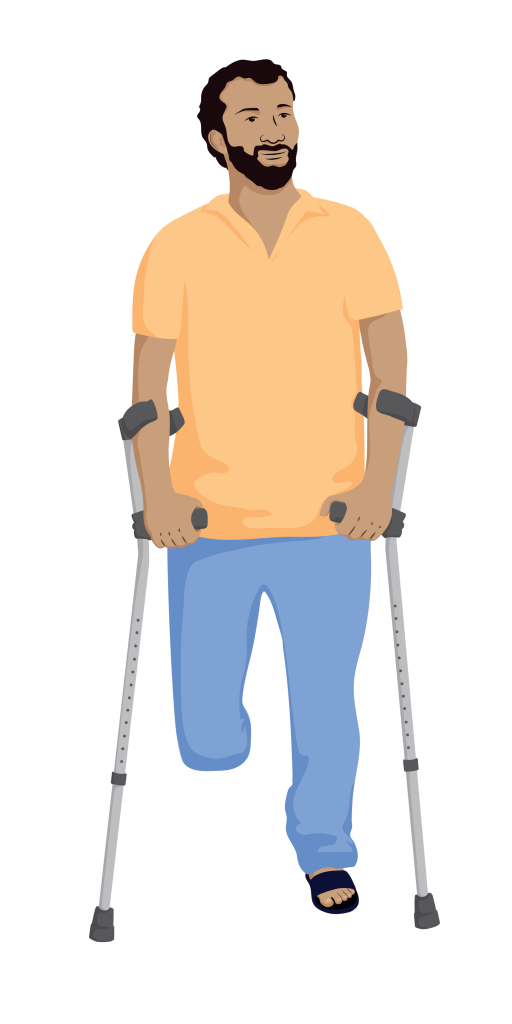
Remember Asif, who has a lower limb amputation?
Question
Tip – click on the question to view feedback
A walking stick may provide some support for Asif when he is wearing his prosthesis. However, a walking stick would not be suitable when he is not wearing his prosthesis. A walking stick can only be used if both legs bear weight.
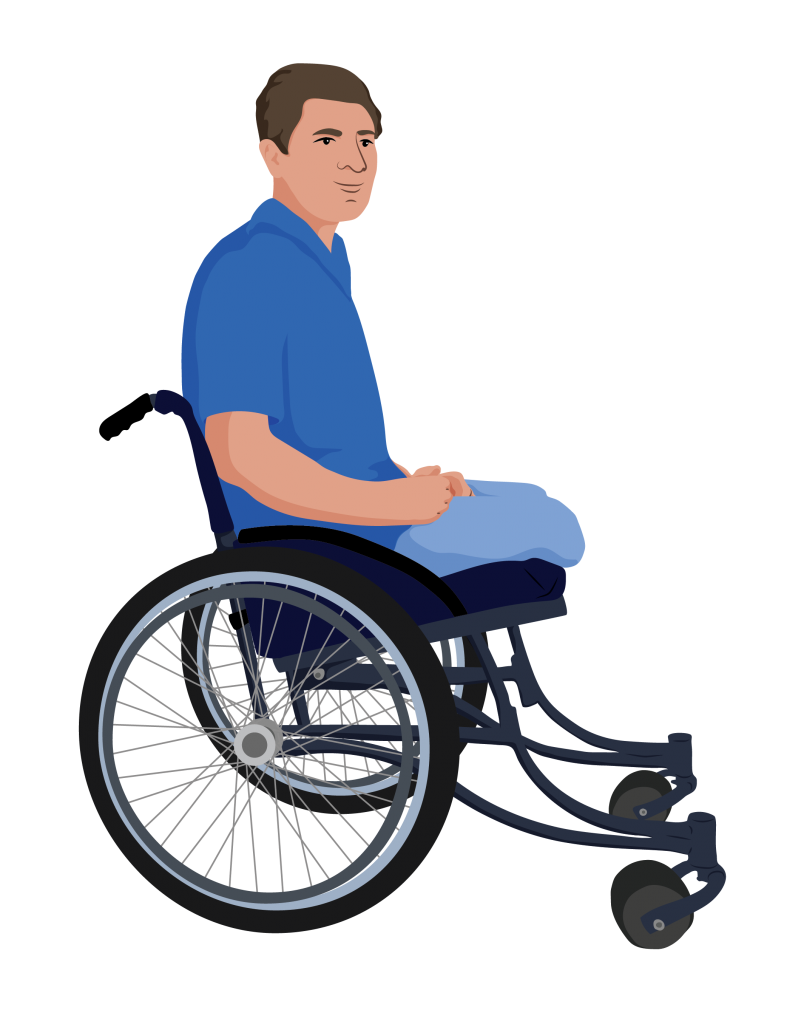
Question
Tip – click on the question to view feedback
A person with both legs amputated usually needs a wheelchair when not using prosthetic legs. If they have prosthetic legs, they may also use a walking aid. This is because walking with two prosthetic legs takes a lot of coordination, strength and energy.
Diabetes
Diabetes can affect:
- Balance
- Vision
- Memory
- Feeling (sensation)
Diabetes also increases the risk of foot ulcers. This should be carefully considered when providing a walking aid.
Foot ulcers are discussed more, later in this topic.
Arthritis
Arthritis can cause pain and muscle weakness.
If a person has arthritis, ask how much weight they can comfortably put through their legs and hands. This will affect the type of walking aid selected and how it is used.
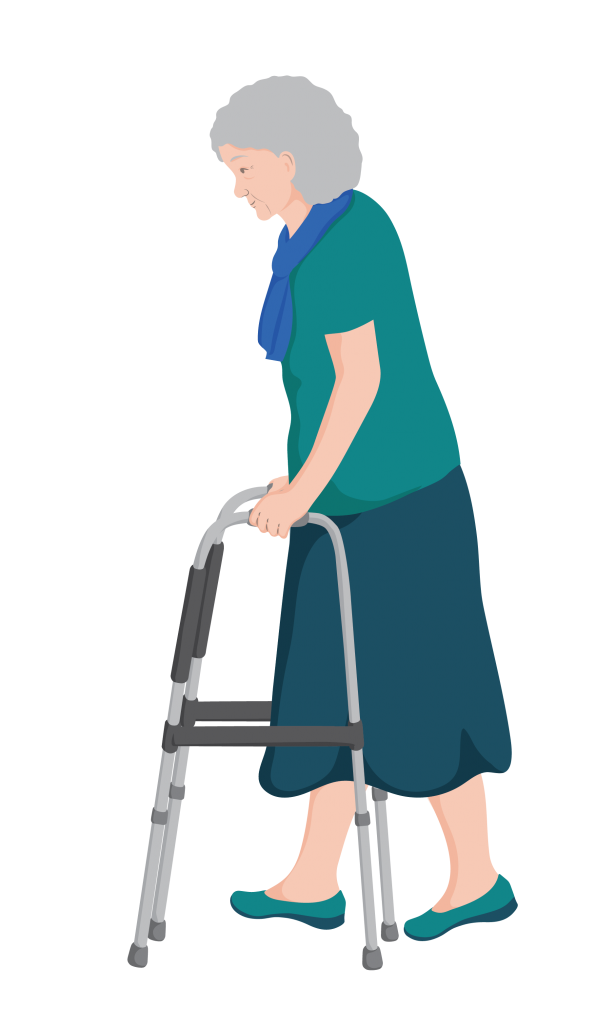
Remember Cali?
Cali has arthritis and pain in her knees and hips when she walks. Using the walking frame helps to take some weight off her legs. This makes walking less painful.
Frail
A person who is frail may have poor balance, strength and coordination. They are likely to need a walking aid that provides more support such as a walking frame.
Health condition not known
Many people may have health conditions that affect what walking aid they could use and how they would use it, but they do not know what their health problems are called.
Discussion
What other health problems are common in your area or service, that can lead to a person needing a walking aid?
Now let’s look at some other physical problems a person may have. Gathering information about any physical problems will help you understand more about what the person can do and which walking aids would be most suitable.
Foot ulcers
Foot ulcers that do not heal can get infected and lead to amputation. They are a serious health risk.
People at most risk of developing a foot ulcer include those who:
- Have diabetes
- Have had a foot ulcer before
- Have an amputation (particularly if caused by a foot ulcer)
- Experience odd sensations in the feet or legs
- Have stiff toes and joints, bunions or other foot deformities
A person with a foot ulcer should not walk or put weight on the affected foot until the ulcer has healed. A walking aid can be used to reduce weight bearing on an affected foot.
However: a person at risk of developing a foot ulcer should not hop. This puts too much pressure on one foot, and can contribute to a foot ulcer. This means that you should avoid providing a walking aid for a person at risk of developing a foot ulcer who is weight bearing on one leg alone.
Discussion
Are foot ulcers common in your area?
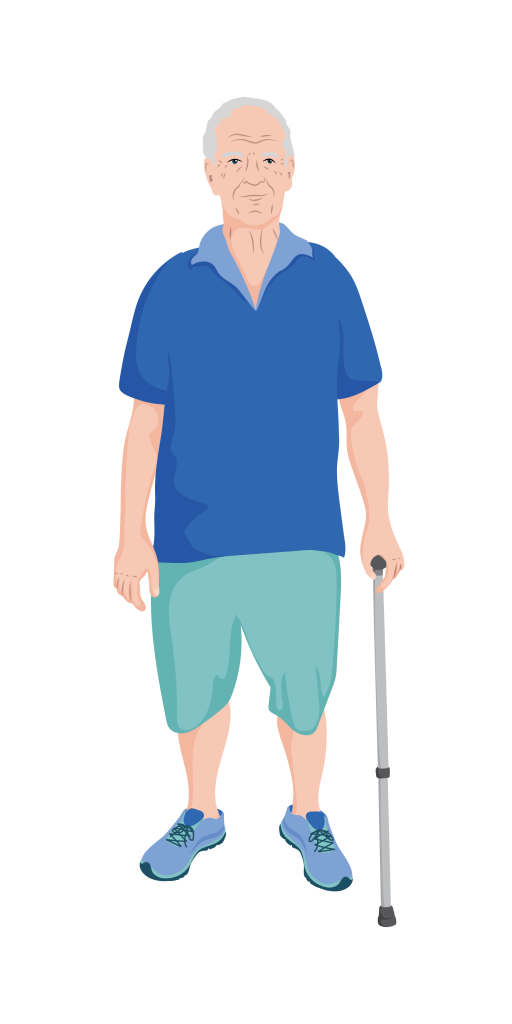
Meet Jensen
Jensen is 70 and loves working in his vegetable garden. He recently found out he has diabetes. Last year he had a foot ulcer after cutting his toe on a rock. The ulcer is now healed and he is taking care of his diabetes.
Jensen has recently fallen at home and out shopping. His doctor suggested he get a walking aid to help keep him safe when walking around.
Question
Tip – click on the question to view feedback
Yes, Jensen is at risk, because he has diabetes and has had a foot ulcer before.
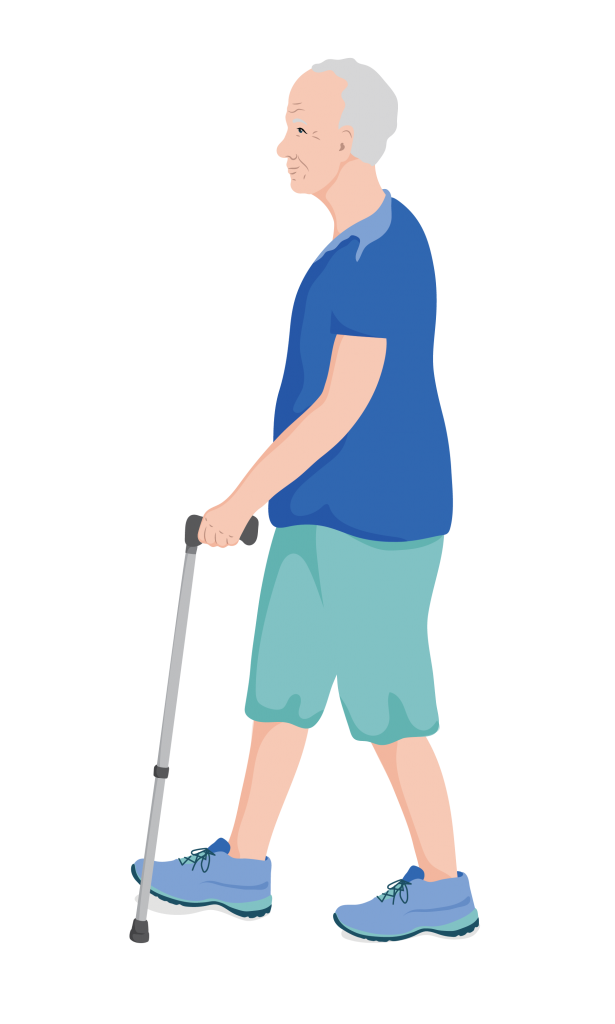
Question
Tip – click on the question to view feedback
All of these things could help to reduce the risk of Jensen getting another foot ulcer:
- How to walk correctly with his walking aid
- To always wear appropriate shoes
- To check his feet every day for any sores
- To see a doctor straight away if he gets a sore
Sensation
If a person does not have feeling (sensation) in the hands or feet, they may not recognise if there is an injury. For people who have problems with sensation, providing protection to avoid damage to their skin is a good idea.
Questions
Tip – click on each question to view related feedback
Wear appropriate shoes.
Avoid heavy weight bearing on the at risk foot (for example no hopping).
Provide soft hand grip materials to prevent injury.
Remind the user to check their hands daily for any injuries.
Pain
Pain can affect how someone uses their walking aid and which walking aid is most suitable.
If a person says that they experience pain, find out where the pain is and how it affects what they can do.